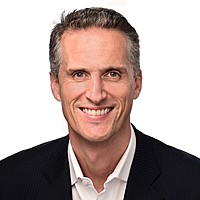Fortlake returned 11% in the toughest bond market of all time. Let us show you how.
In financial markets, knowledge is king and data is the backbone by which investors make their decisions. And while fundamental analysis can get you ahead in equity markets, it can be a very different story if you are a fixed income investor. The relationship between data, interest rates, and asset valuations has become even more important in the last two years as steep hikes distorted prices right across the credit markets.
And if you had a garden variety approach to bond markets in the past two years, your investment return would have responded accordingly (and not in a positive way, at that).
But we at Fortlake Asset Management do things differently - and deliberately so. We believe the increase in the amount and quality of data available in the fixed-income markets lends itself to a different kind of execution.
Atypically, the Fortlake team use a quantitative approach to finding attractive investments and a fundamental approach to executing them. Additionally, every new asset or new position that we look at is assessed individually on its merits.
We believe this opens us up to equity-like returns even though we operate in a totally different asset class.
In this Fund in Focus, I'll share with you the framework and the process behind the Fortlake Real-Higher Income Fund.
Fortlake Asset Management
Fortlake Asset Management, as an experienced fixed-income manager, offers institutional expertise in a specialised setting, focusing on generating returns above inflation.
Visit our website for more information.
EDITED TRANSCRIPT
Thanks very much for listening today. I'm Christian Baylis, the CIO for Fortlake Asset Management. Today, I'll be talking about the two core retail products that Fortlake offers, the Fortlake Real Higher Income Fund and the Fortlake Real Income Fund.


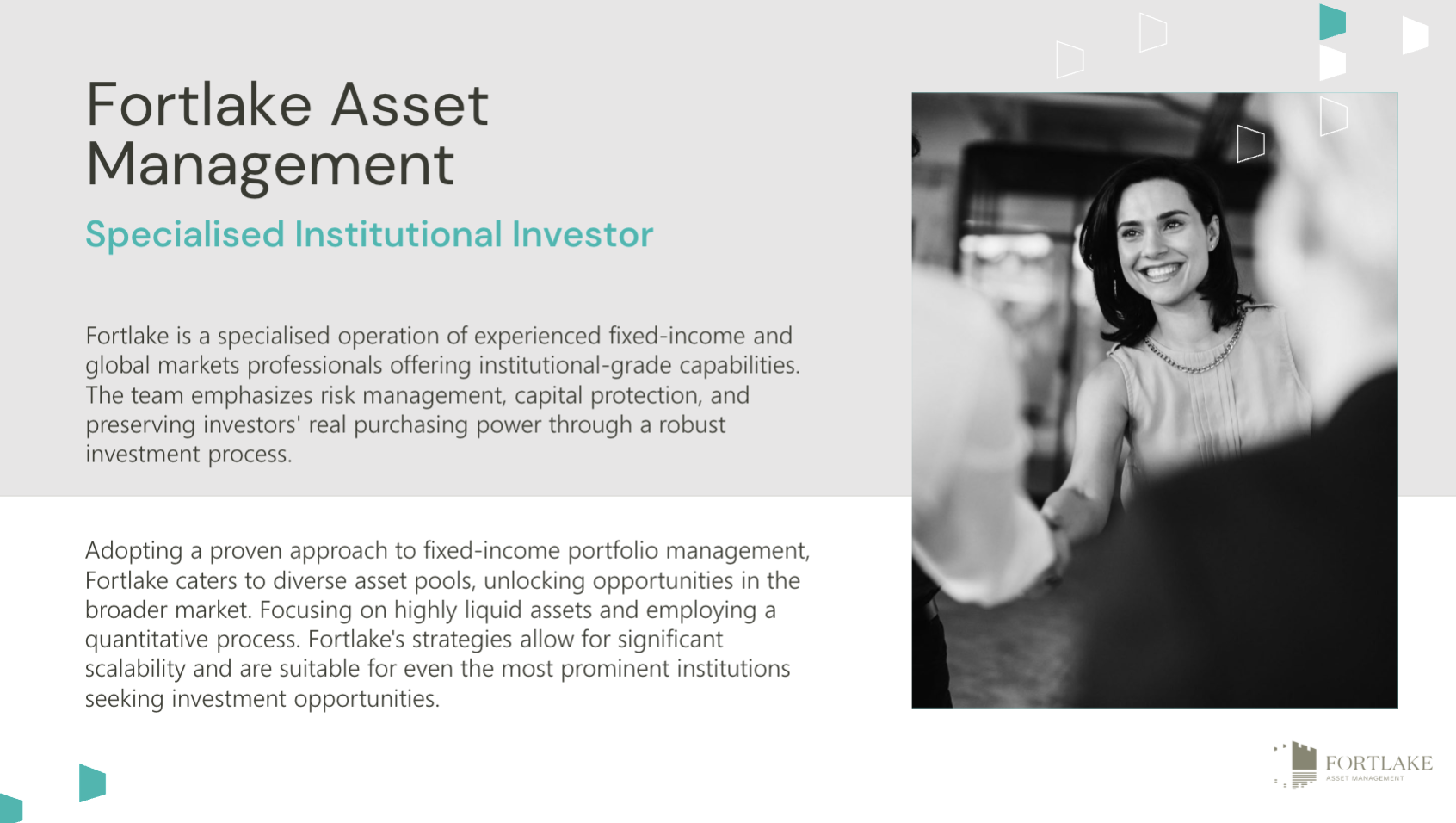
So, just a brief introduction to who we are and what we do. Fortlake is a specialised fixed-income manager utilising the asset class to generate non-correlated returns in our sphere of competence.
Ultimately, we use the fixed-income asset class as a conduit to generate non-correlated returns and typically, asset consultants and asset allocators tend to put us in the alternatives bucket. Despite that, we do find that some asset allocators and consultants like to put us in amidst other fixed-income peers as well. So depending on what the consultant's motivation is, we do tend to fit across the board in terms of those allocations.
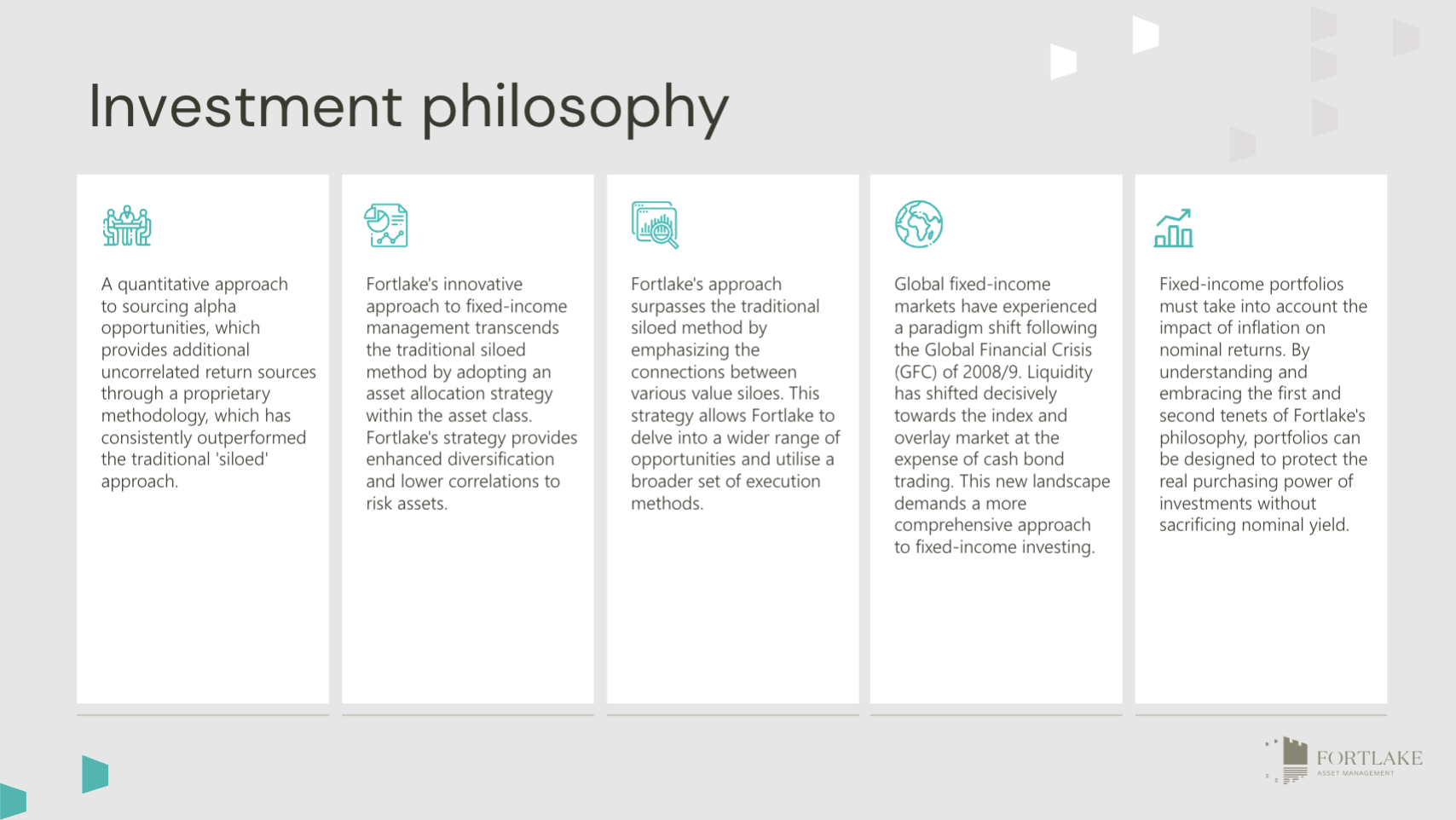
Fortlake is a specialised team of asset management professionals with global market experience. Our core philosophy is about generating absolute returns and ultimately using a strong quantitative backbone towards the process. Now this is a little bit different to how the garden-variety fixed-income asset manager would work.
Typically, quantitative backbones don't exist in the fixed-income market and the main reason is that the over-the-counter nature of the market means there's a lack of great-quality data. But what we have found is that since the Global Financial Crisis and since clearing houses and cleared markets have become a more prominent part of the ultimate microstructure of the fixed-income market, the data quality is getting better. That is lending itself to more of a quantitative process. So that does make the asset class more scalable. It does mean that we are able to implement a lot of quantitative factors and tools in our asset class.
It does ultimately mean that we're going to become a little bit more equity-like over the next 5 to 10 years as these markets become deeper and more liquid as well. And so, ultimately what that means is that we want to use these quantitative tools not to make the decisions for us, but ultimately as augmentation tools to enable us to make better decisions.
So, we often say that about 70% of our process is quantitative and that tends to be the front-end part of the process and then the back-end part of the process, the remaining 30% tends to be more practitioner-related subject subjective and that's where a lot of the execution side comes into play.
We always say that execution in our market is a critically important part of the process as opposed to equities where execution tends to add reasonably minor amounts to the overall return in our markets, it can add up to about 50% of the overall alpha.
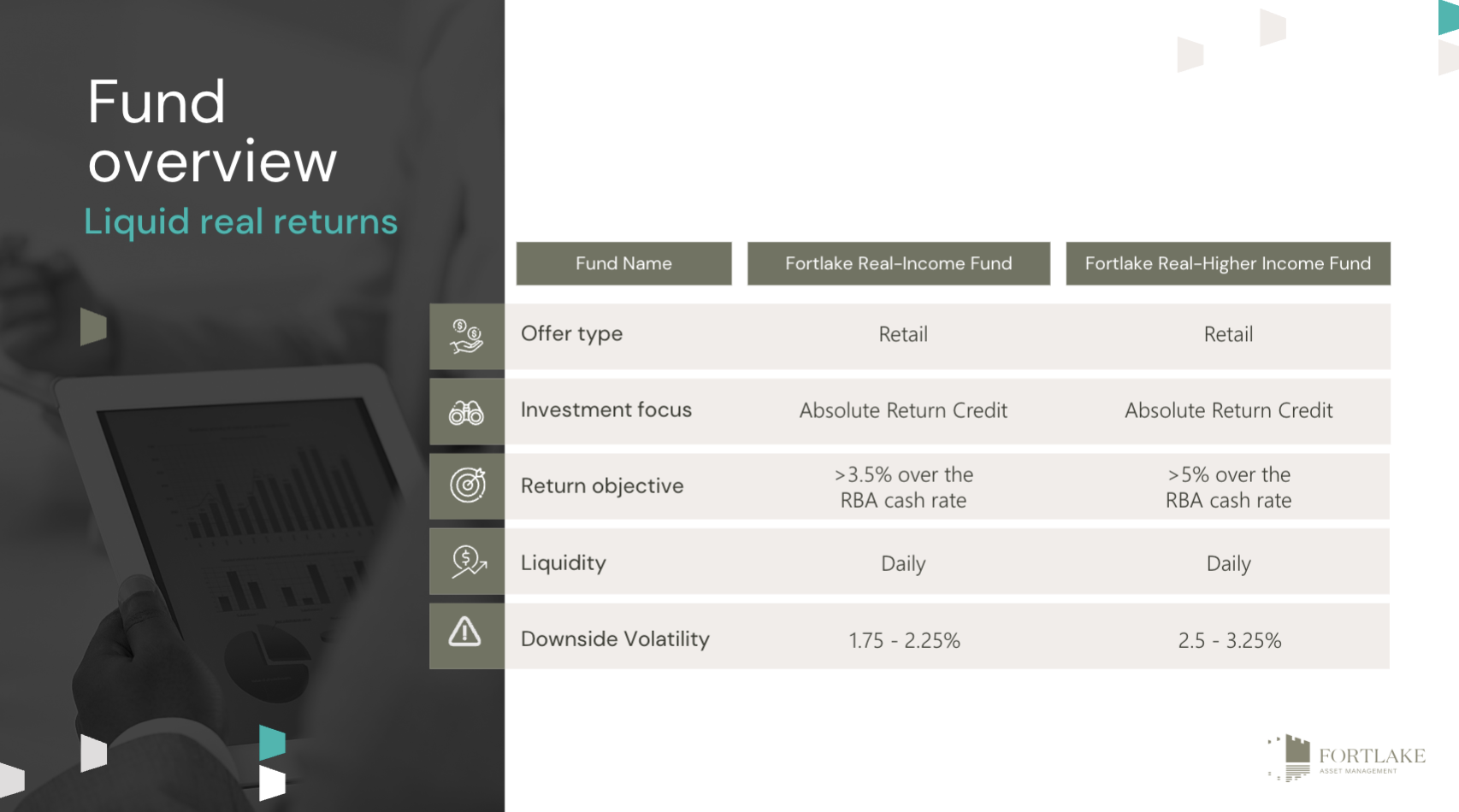
So with that, these are the two retail funds that we're talking about today. The Real Higher Income fund and the Real Income fund, as I said, are both retail products seeking absolute return. And what I mean by absolute return is that we literally will invest across the spectrum, the full fixed income universe and geographically as well.
We aren't limited to particular investment destinations. We've got broad scope to implement, implement in a variety of ways and ultimately we are a return-seeking fund and that means we will go to where we need to go in order to stick to the ultimate return and risk objectives of the fund and deliver what we've ultimately guided investors to.
With the Real Higher Income fund, we're targeting 5% over the RBA cash rate over a three-year period or over the economic cycle. And on the Real Income fund, we're targeting a minimum 3.5% above the RBA cash rate.
These are daily liquid investments, meaning that we tend to operate in the most liquid parts of the capital markets. We tend to not be involved in CDOs, CLOs and the structured credit parts of the markets or the illiquid non-scalable parts of the markets.
We also tend to focus on risk-based returns. So we primarily focus on the risk objective first and then we hope to back-solve the ultimate return objective. So what we actually target there is a downside deviation in the Real Higher Income fund of 2.5 to 3.25% in any one given year at a 68% probability and then the Real Income fund we target a 175 to 225 basis point downside deviation. So risk-controlled, risk constrained and ultimately seeking a decent return.
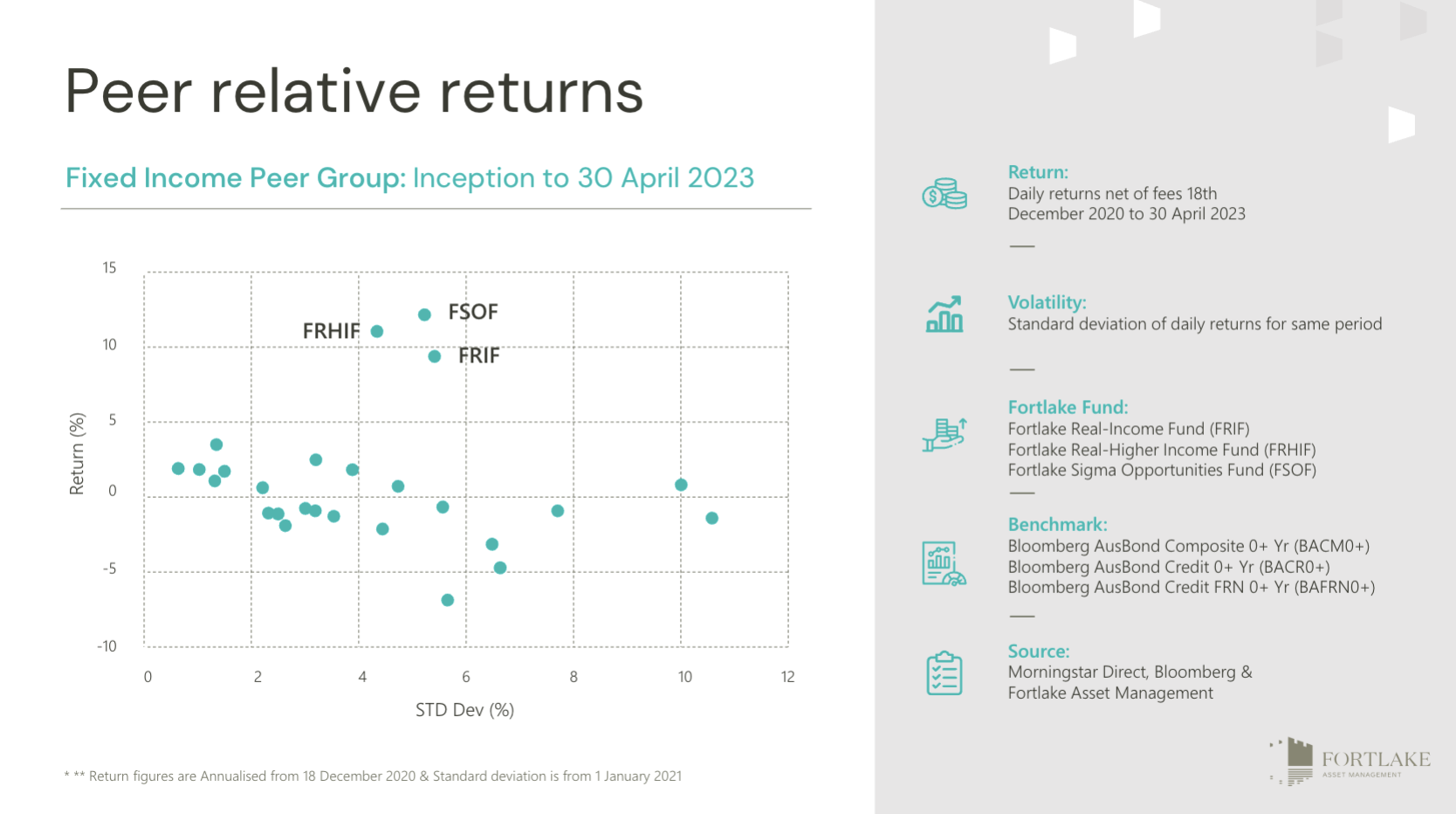
As you can see here the process you know ultimately looks to generate returns irrespective of the market and when you look at the since inception returns versus the Australian peer group to 30 April 2023.
You can see that all three products or the Fortlake suite of products have all returned double-digit returns and above at reasonably good levels of risk relative to the peer group. Keep in mind this particular cross-section of time that we've been operating, roughly 30 months, has incorporated probably the toughest bond market on record. Bond indices were down somewhere between 5 and 10% and I don't think there was one peer that ultimately got a return in excess of inflation.
We say that being inflation-focused and being absolute return focused provides degrees of freedom to operate in different silos and different parts of the value chain in the fixed income markets. It also allows you to sidestep parts of the market where there have been negative returns. We see that as a critically important feature of the products that we offer.
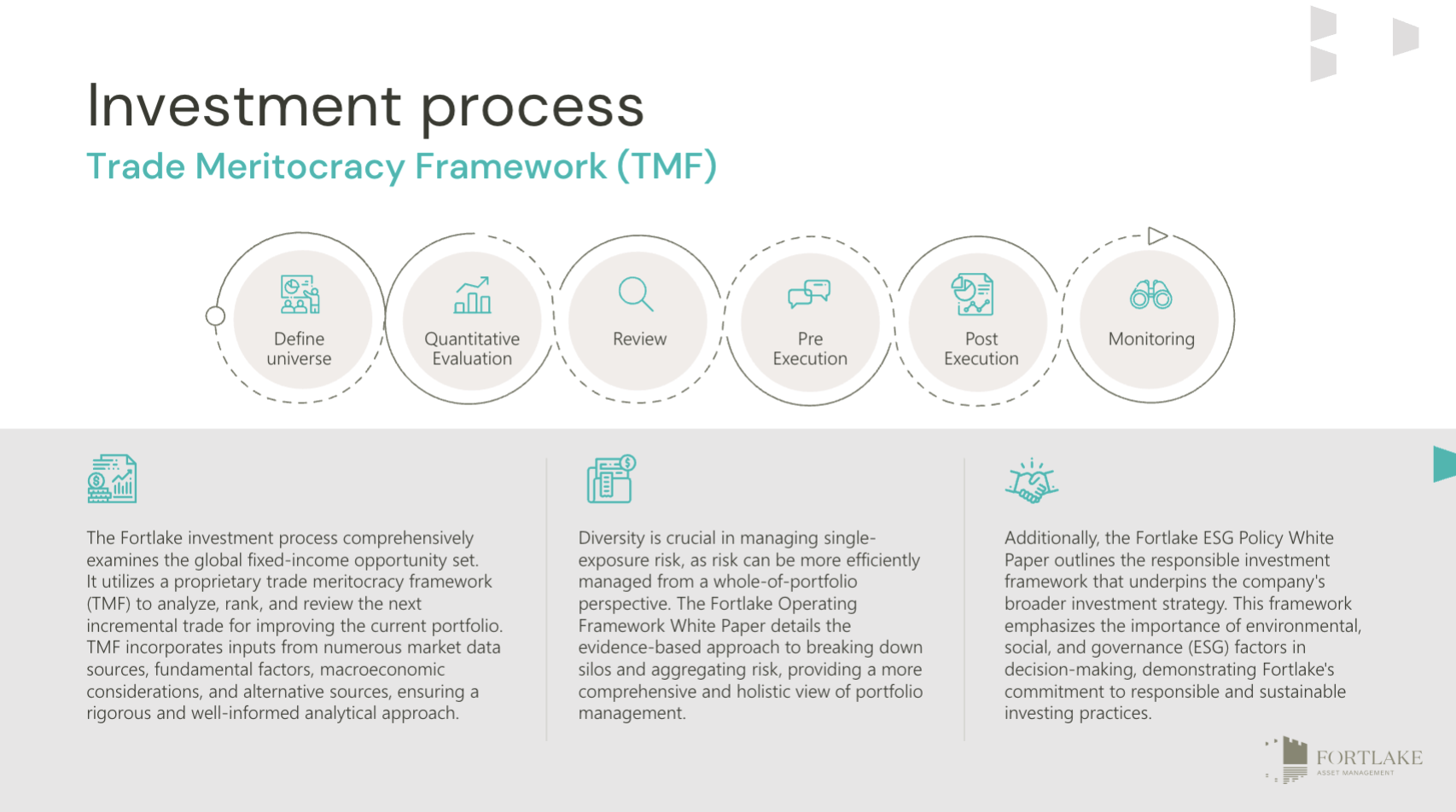
Ultimately, what sits behind the process is a meritocracy framework i.e. We don't ultimately go into benchmarks, We don't feel that we have to buy something for the sake of buying it. Every decision that goes into the process is ultimately meritocracy based.
What that is is basically every single position that's held in the portfolio has to compete for capital and has to compete for a risk-adjusted placement in the portfolios and that's really what I guess defines the nature of the portfolio. So we tend to be incremental in terms of the way that we invest, we don't have high turnover. Turnover is around about 10% of the portfolio at any one point in time.
What that means is that all positions that come into the portfolio have to be accretive to the risk adjusted return. And so we tend to be a bit more like a glacier as opposed to this directional swinging type of asset manager.
We ultimately change shape in very slow in a very slow speed. And what you'll find is that over a six-month period or depending on the volatility in the market, our speed of change ultimately is dictated to us by how markets are functioning, but we don't ultimately turn over. And the reason for that is that we're trying to avoid institutional or frictional costs in the portfolio.
A simple example I would give of that is that when you trade or you transact, there's a cost to the portfolio and that's 100% certain that that will be a detracting feature of the portfolio, whereas when you move into the new position that you put on, ultimately that's going to be a risk-based decision. That is, you won't know exactly what the return profile will be of that new position. There is an element of estimation in that.
So it doesn't make a lot of sense to trade a certain negative for an uncertain positive and we are very much focused on that in the process.
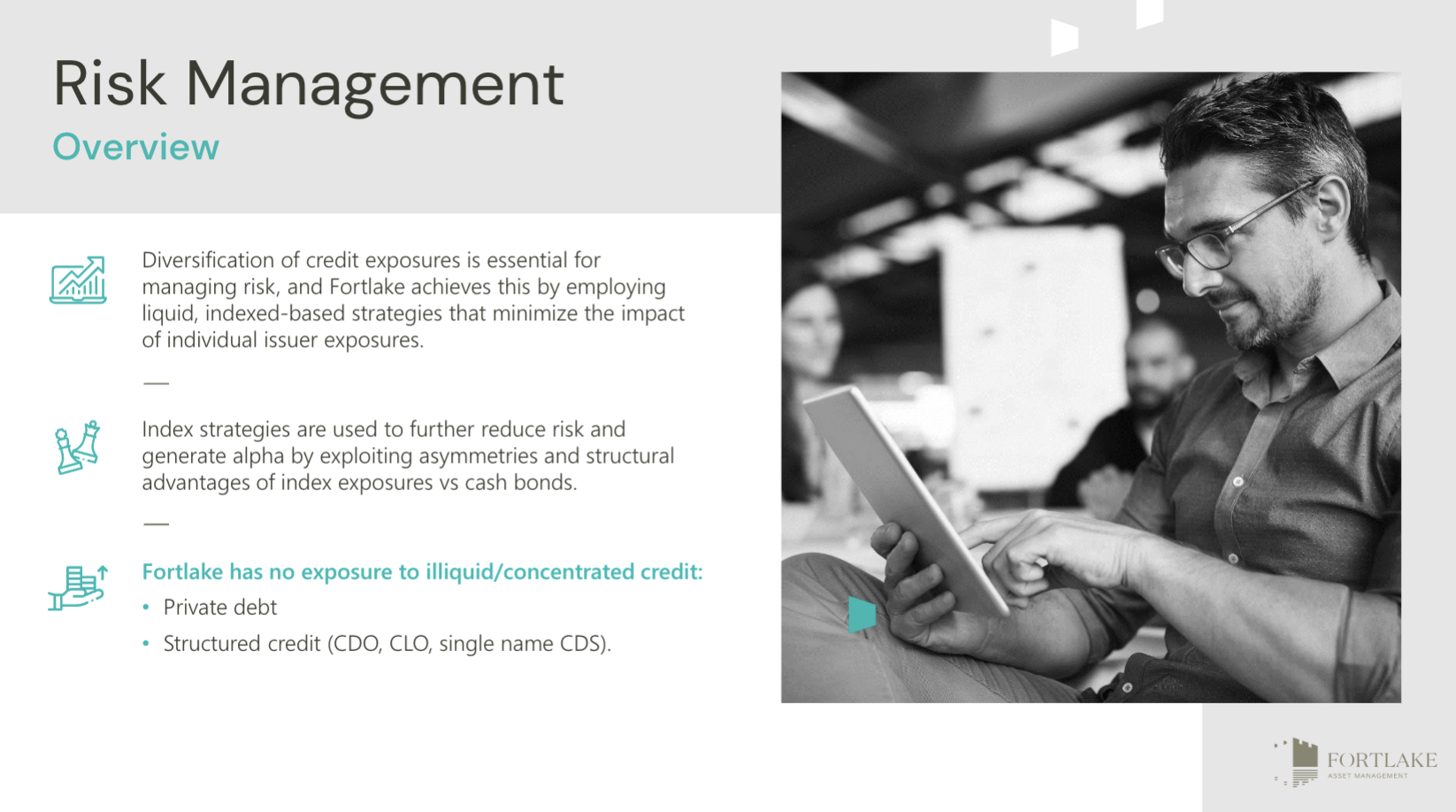
Risk management's obviously a very important part and a very important feature. I think we're probably one of the few funds that ultimately has risk-based objectives and we certainly bring that to the forefront of the process. Risk is first and foremost and then return is a byproduct of that risk management process.
We do have high levels of diversification around 500 to 600 different positions as I said invested across 25 to 26 different countries.
Ultimately, what we're trying to avoid is these asymmetric downside types of events or idiosyncratic events. As an example in fixed income and credit, you will find that you you live and die by the downside, you don't live and die by the upside.
And by that, I mean when we have something go wrong in the world of fixed income, the impact on the portfolio can be very large. Unlike equities, where you can get 5 to 10 times on your money and beyond, in fixed income, we just don't get that privilege. So we have to be more focused on the downside and that ultimately has to be borne out in the process and the risk management process.
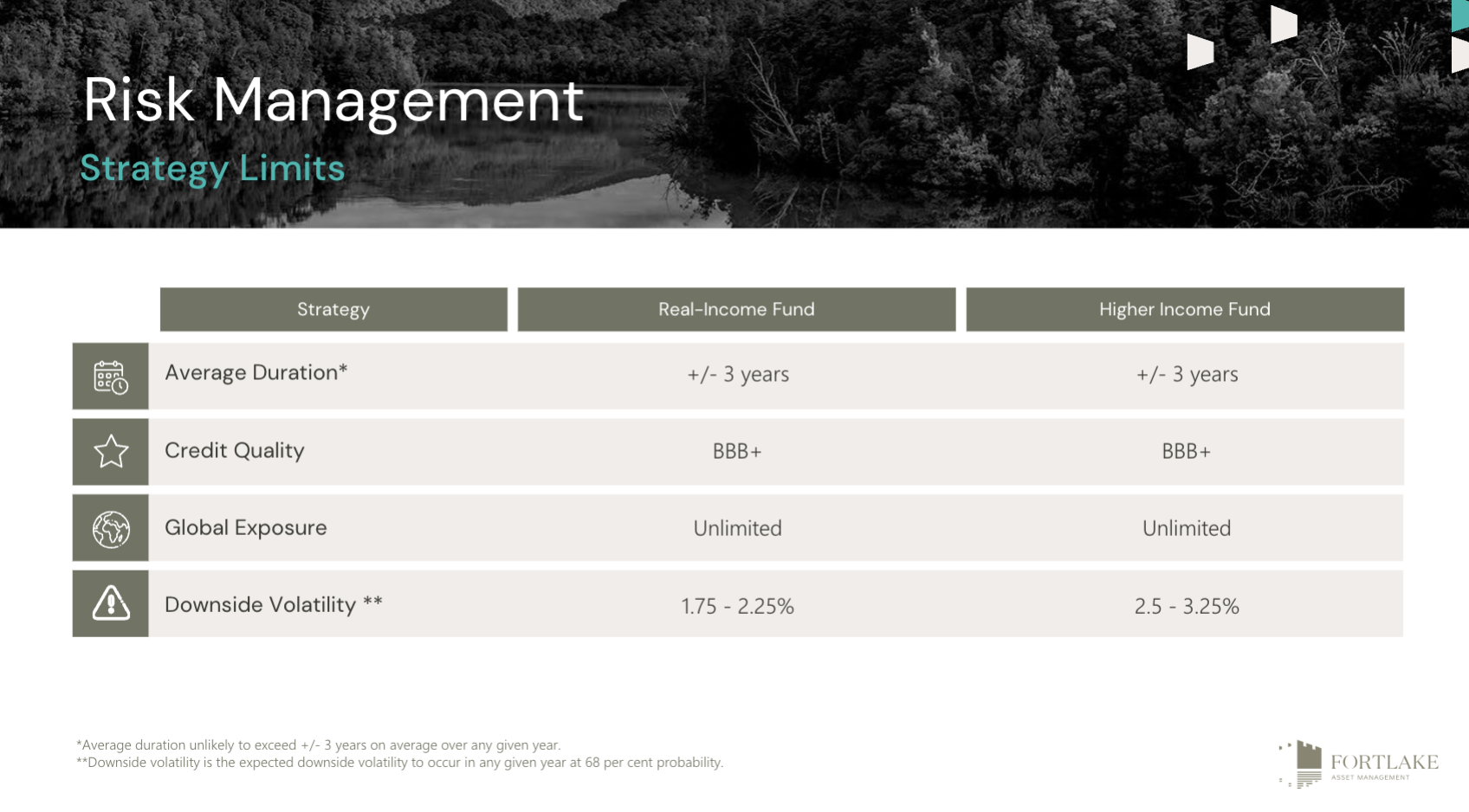
Here are some of the features that you'll find in the portfolio. Typically plus or minus three years on average over any given year. The credit quality tends to be on average BBB+ across the two portfolios. Our global exposure is unlimited and that ties into the nature of the funds which is absolute return.
And then we've got the downside volatility targets there again. So, defining features of the product include our targeting of risk but also the return thresholds that we're looking for.
On the Real Income fund, we're targeting a minimum of 3.5% above the RBA cash rate. And then on the Real Higher Income fund, we're targeting 5% above the RBA cash rate. The fees, 44 basis points for the Real Income fund 52 basis points for the Real Higher Income fund, no performance fees and that's obviously reasonably competitive compared to the domestic peer group.
The buy-sell spreads are obviously very tight and indicative of what buy-sale spreads would be in the underlying assets that we purchase. And really you should look to these buy-sell spreads.
I guess there's a risk proxy as well because if we're able to offer those sorts of buy-sell spreads, it also means that the investments that we're making have to be commensurate in terms of the buy-sell transactions and also the liquidity that we're offering through to the investor.
Obviously, we can offer minimum investments of reasonably small sizes. And then, ultimately what we're looking to do is make this a liquid alternative that fits in a retail portfolio.
If you would like to get access to any of the Fortlake funds, you can obviously get access via most of the major platforms or you can reach out to Fortlake on enquiries@fortlake.com.au. Thanks very much for your time.
2 topics
2 funds mentioned
